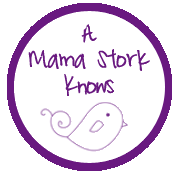Well as some of you know, I went into the doctor last Monday for a NST (non-stress test)to check on Jayden. I had noticed pretty significant decreased movement starting Monday. The heartbeat was great so they sent me home. Well her movement didn't pick up for the rest of the week. I went and bought a dopler and checked her heartbeat throughout the week. It was always fine so I waited until my normal appointment today to address this with the doctor. At our 32 week appointment today I told the nurse I was concerned. The doctor hooked me to the machine for another NST, which was fine. After that she wanted to check the amount of fluid I had so we got another ultrasound!!! Have I mentioned I love this doctor. Well she was able to confirm that our little one is still a girl, she is breach =(, about 4 1/2 lbs already, and I have Anterior Placenta, I copied the definition below. It's no big deal, it just explains why I can't feel her sometimes. During the ultrasound she was moving around a lot, I just couldn't feel it. It also explains why it took me so long to start feeling her in the first place, and why the doctors used to have a hard time finding her heartbeat. Overall Jayden is very healthy, moving around plenty, and already 4 1/2 lbs! Right on target!
Anterior Placenta: It means your baby is taking a backseat to the placenta. The term "anterior placenta" refers to the location of the placenta within your uterus. Most of the time, a fertilized egg will situate itself in the posterior uterus — the part closest to your spine, which is where the placenta eventually develops, too. Sometimes, though, the egg implants on the opposite side of the uterus, closest to your abdomen. When the placenta develops, it grows on the front (or anterior) side of your uterus, with the baby behind it.
Does the location of your placenta make any difference? Not to your baby, who doesn't care which side of the uterus he or she is lying on, and it certainly makes no difference to him or her where the placenta lies. And what about to you — or your practitioner? You might be less able to feel your baby's early kicks and punches because the placenta will serve as a cushion between your baby and your tummy. For the same reason, your doctor or midwife may find it a bit harder to hear fetal heart sounds (and it could make amniocentesis slightly more challenging). These situations will resolve if the placenta moves into a more posterior position later on (as anterior placentas commonly do). But the good news here is that, despite those slight inconveniencies, an anterior placenta in and of itself poses no risk to your health.
Subscribe to:
Post Comments (Atom)















 >
>


















No comments:
Post a Comment